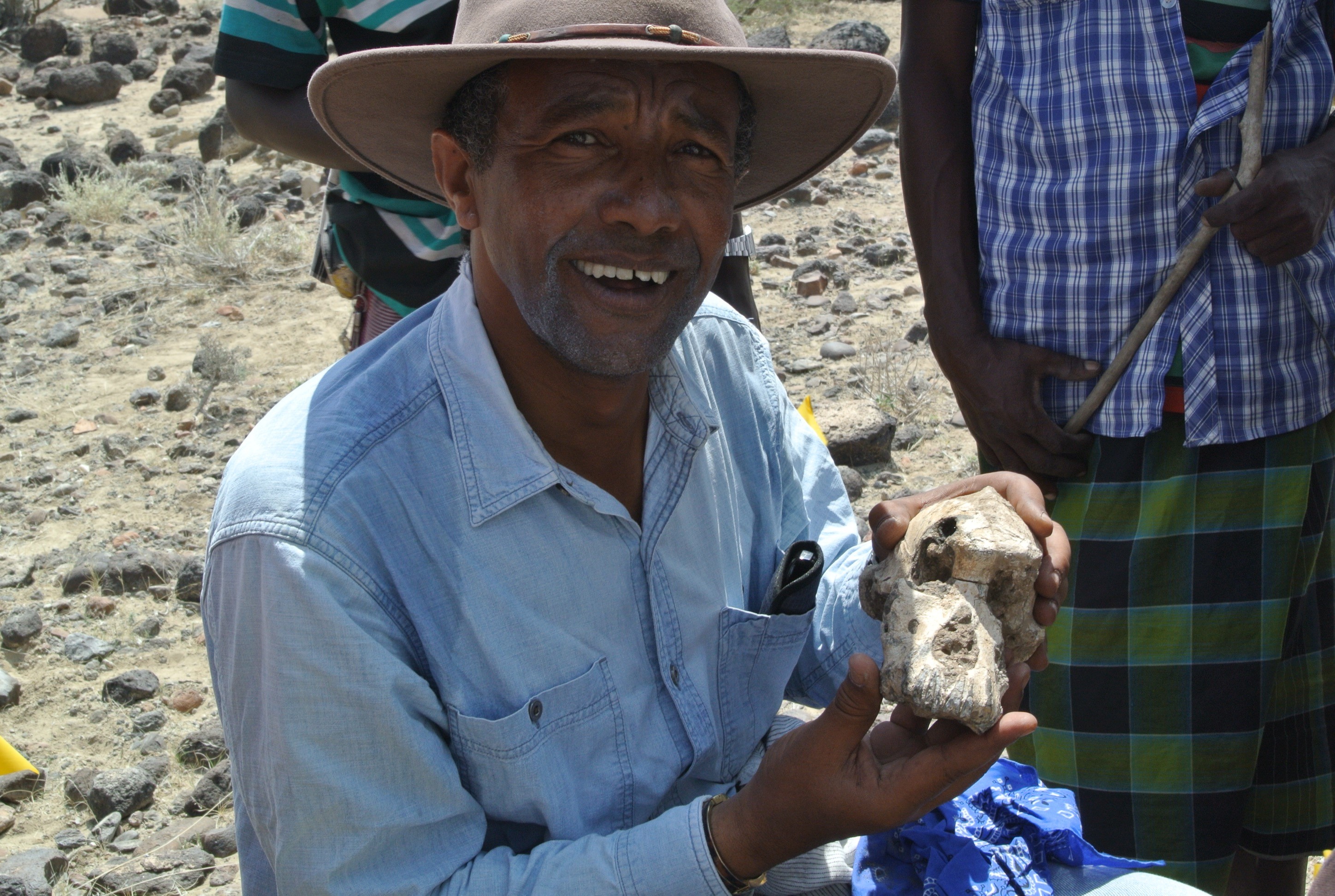The 50th Journal of Anthropological Research (JAR) Distinguished Lecture: Dr. Yohannes Haile-Selassie presents A New Face to an Old Name: Recent Discovery of a Cranium of the Earliest Australopithecus in Ethiopia
-Event-

Start Date: Sep 24, 2020 - 07:00pm
Location: Presented Via Zoom
The 50th Journal of Anthropological Research (JAR) Distinguished Lecture will be presented via Zoom on Thursday, September 24, 2020 at 7 pm MST. Dr. Yohannes Haile-Selassie, Curator of Physical Anthropology at the Cleveland Museum of Natural History and Adjunct Professor at Case Western Reserve University, will present A New Face to an Old Name: Recent Discovery of a Cranium of the Earliest Australopithecus in Ethiopia. Register here for the event
Woranso-Mille, a paleoanthropological site located in the Afar region of Ethiopia, has become one of the most important sites to understand the evolutionary history of early hominins during the mid-Pliocene. The geological sequence at this site (~150 meters-thick) samples almost one and a half million years, between >4.3 and <3.0 million years ago (Ma). It is the only site thus far that has provided incontrovertible fossil evidence showing that there were multiple related hominin species co-existing in close geographic proximity during the mid-Pliocene (3.5 – 3.3 Ma). Recently, a 3.8-million-year-old almost complete hominin cranium was discovered at the site and it was assigned to A. anamensis - the earliest known species of the genus Australopithecus – dated to 4.2 – 3.9 Ma. In addition to revealing the face of A. anamensis for the first time, the new cranium also challenged the long-held hypothesis of direct, linear evolution from A. anamensisto Lucy’s species, A. afarensis, and added about 100kyr to the younger end of the A. anamensis time range. A new, more complex scenario for the origins of the human lineage is discussed in light of these latest finds and analyses.
Dr. Haile-Selassie was named by the prestigious journal Nature as one of the World’s top 10 scientists for 2019. He earned his Ph.D. from the University of California Berkeley and has been leading expeditions in his native Ethiopia for decades, personally discovering and analyzing many important fossils of several Australopithecine & pre-Australopithecine species dating between about 5.8 and 2.5 million years ago, as well as a number of fossils of early forms of genus Homo.
The Journal of Anthropological Research has been published quarterly by the University of New Mexico in the interest of general anthropology since 1945. For subscription information, please visit www.journals.uchicago.edu/JAR. For information on the Lecture series or JAR, e-mailjar45@unm.edu. Student subscriptions to JAR are only $23 for print and electronic versions.
